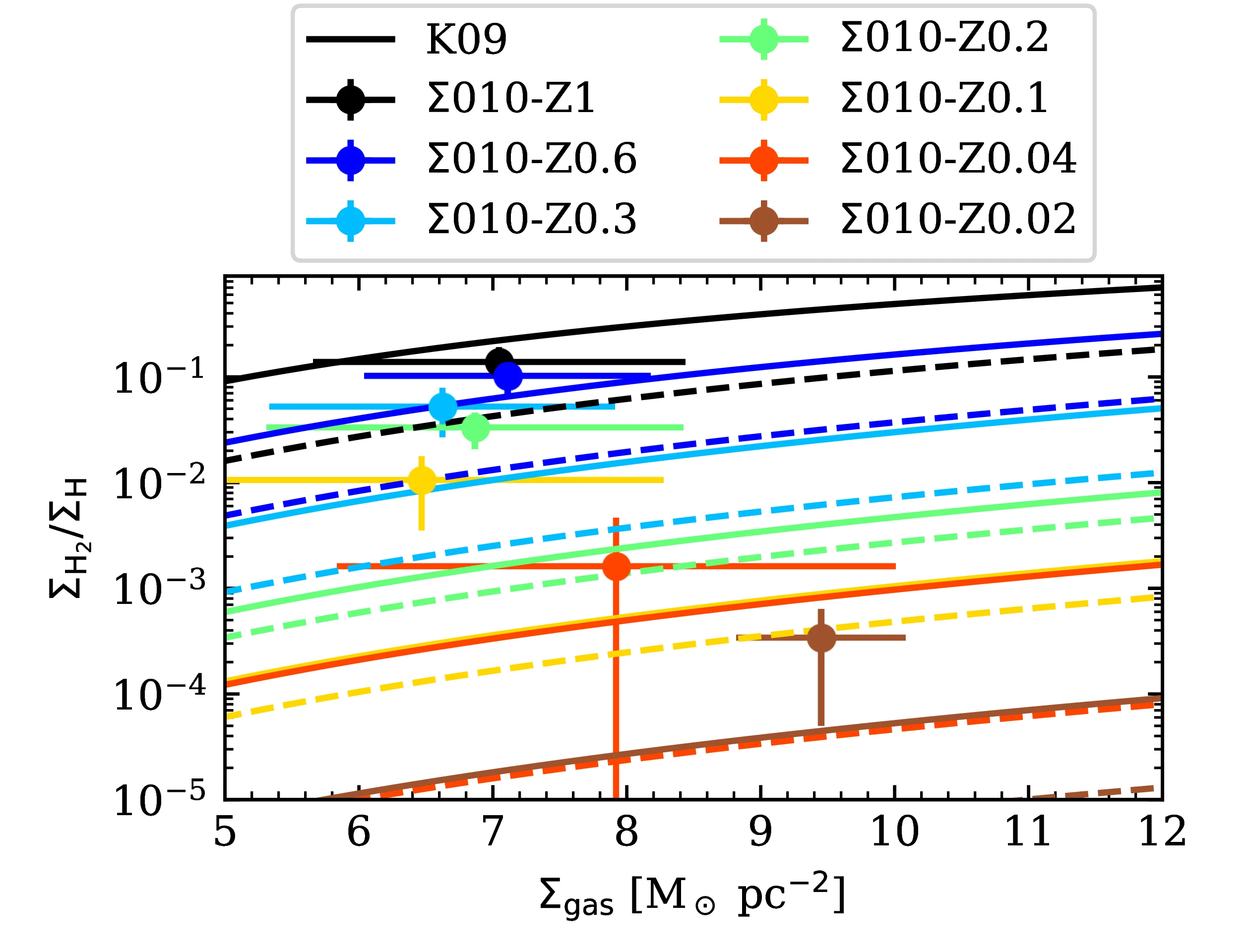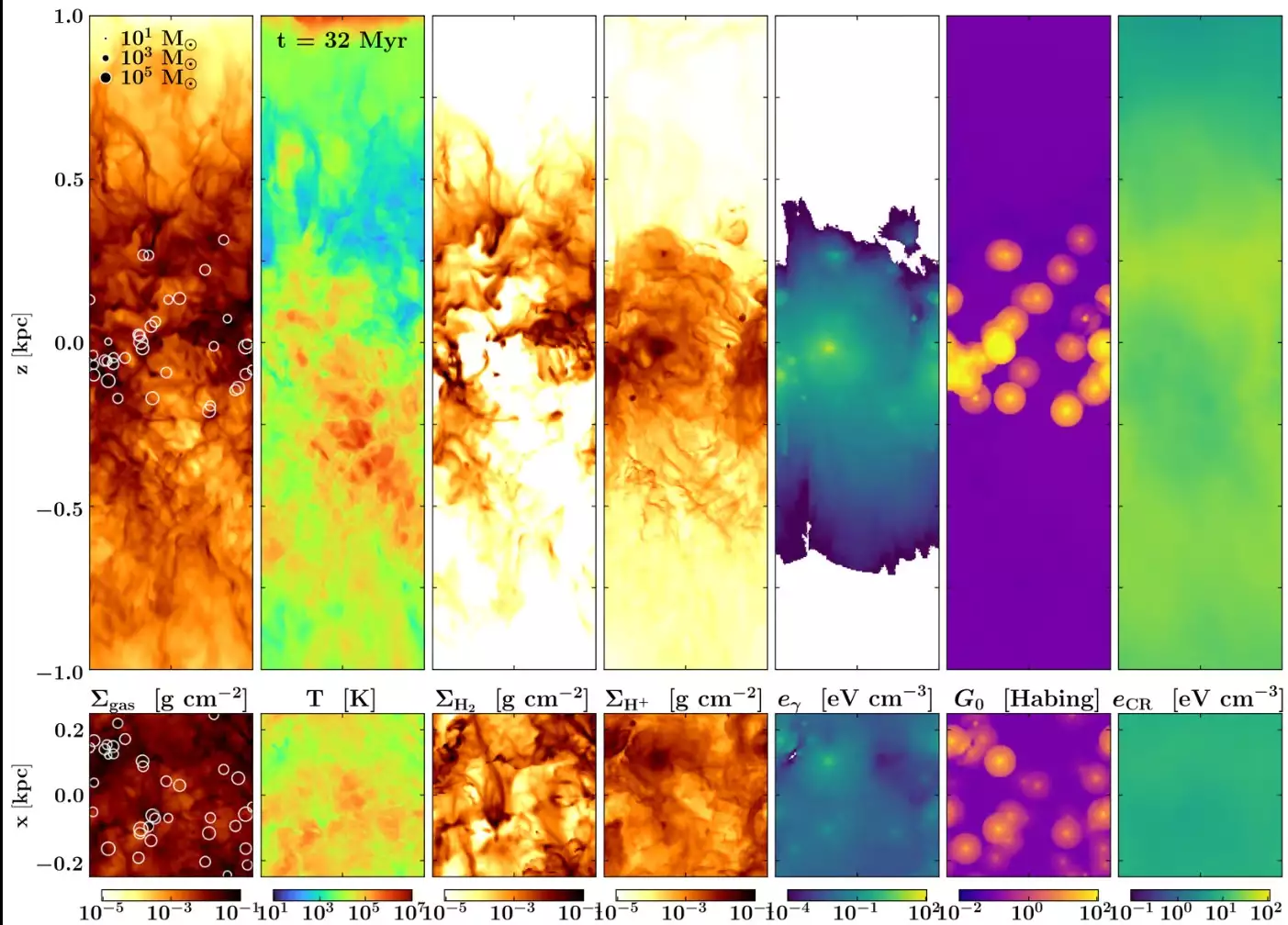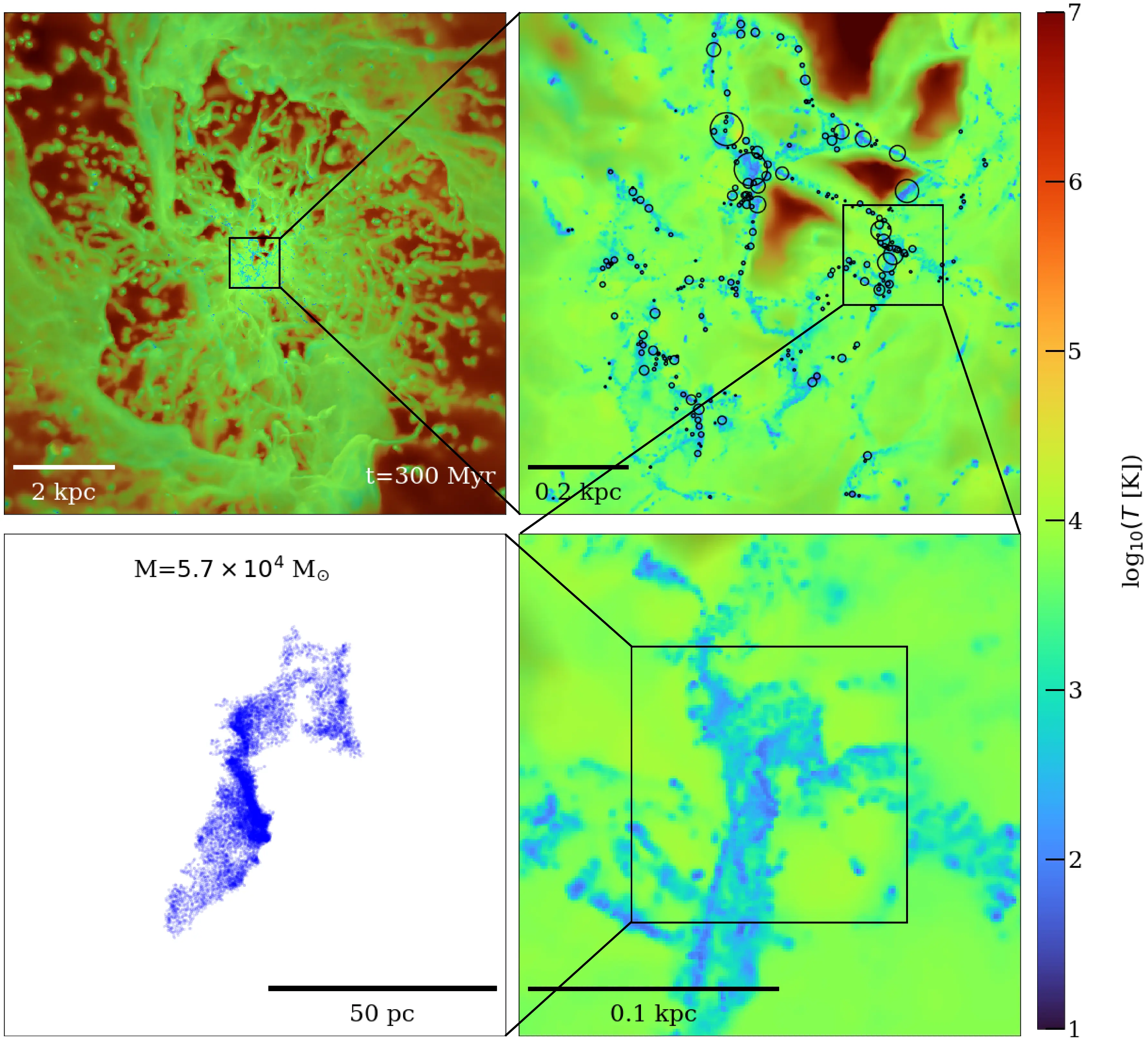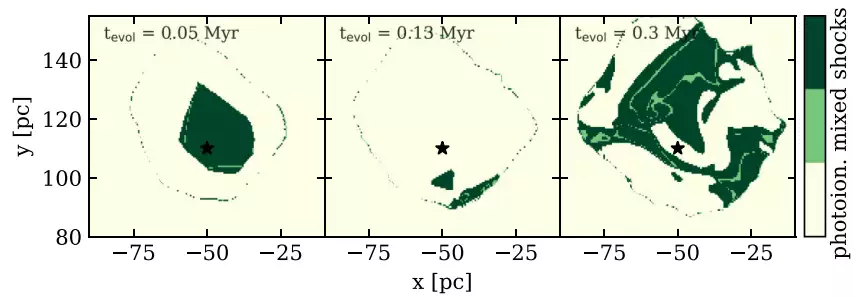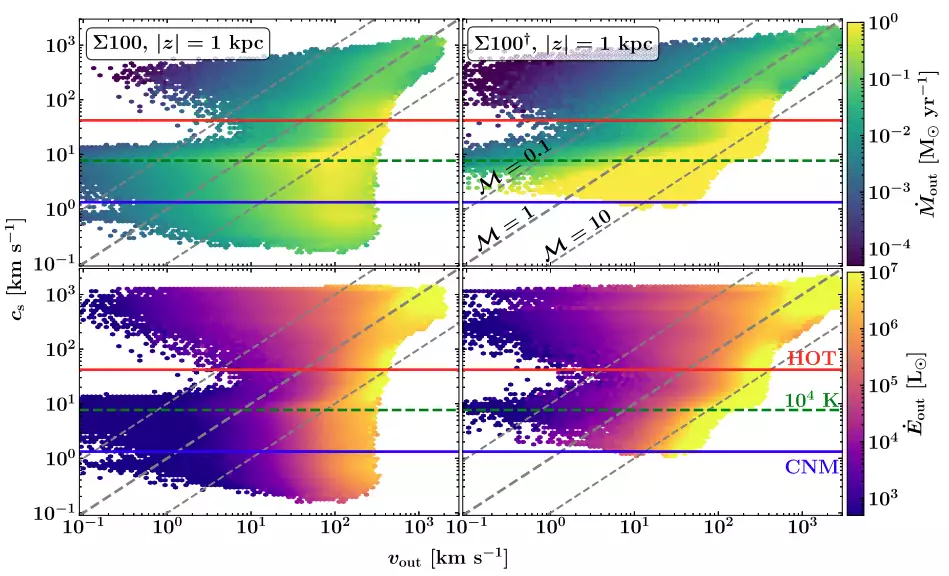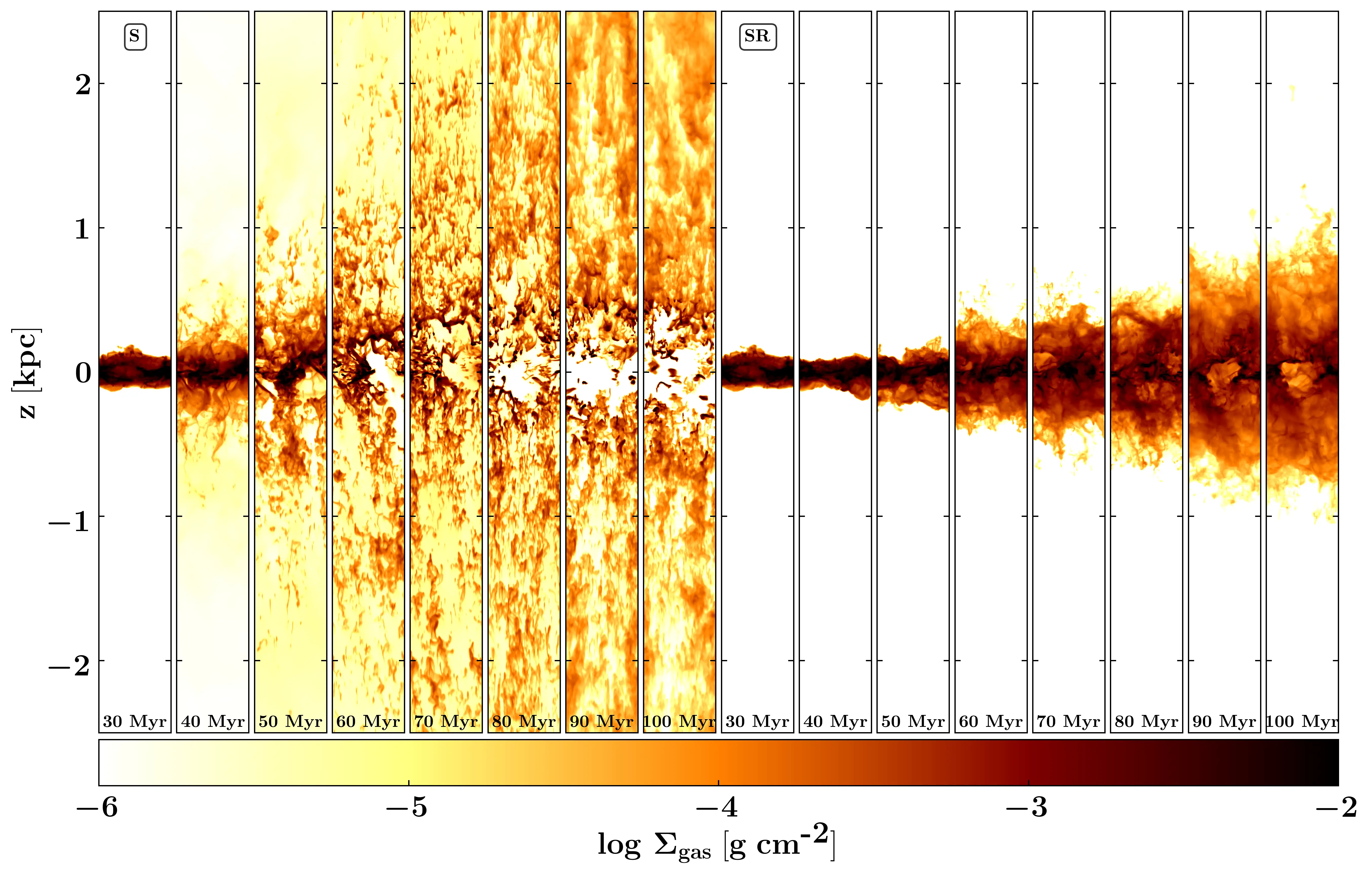My top 5 cited records accumulate a total of 189 citations, contributing to an h-index
of 6 (first author h-index: 3).
Across my career to date, the average of my personal 2-year impact factors is I̅F̅2 = 23.1
± 11.8.
updated: October, 2025
Authors who cite me the most
- Pfrommer, C. (18)
- Walch, S. (17)
- Kim, C. (16)
- Ostriker, E. (16)
- Klessen, R. (15)
- Glover, S. (14)
- Pakmor, R. (12)
- Bryan, G. (12)
- Girichidis, P. (12)
- Steinwandel, U. (11)
![Citation statistics]()
![The multiphase interstellar medium]()
My top collaborators (scaled by number of joint publications)
![Watanabe25]()
Massive runaway stars create bow shocks as their stellar winds collide with interstellar gas, accelerating
particles that produce detectable gamma-ray and radio emission. We present 3D cosmic ray magnetohydrodynamic
simulations of these bow shocks, tracking particle acceleration over 180,000 years across different cosmic ray
diffusion rates and stellar velocities. Our simulations incorporate dynamic particle injection at shock fronts
and calculate predicted emission spectra. Results show that cosmic ray diffusion significantly influences bow
shock morphology and non-thermal emission luminosity, with efficient forward shock acceleration producing
gamma-ray and synchrotron signals comparable to observations. This demonstrates that cosmic ray physics
fundamentally shapes bow shock structure and detectability.
![Brugaletta25b]()
The gas-phase metallicity strongly influences heating, cooling, and star formation in the galactic interstellar
medium (ISM). Using magnetohydrodynamic simulations from the SILCC project with the FLASH code, we study
metallicities from one-fiftieth to solar. The models include non-equilibrium thermo-chemistry, stellar
radiation, winds, supernovae, and cosmic rays. With decreasing metallicity, the star formation rate drops by
more than a factor of ten, the cold gas fraction declines, and the warm gas fills most of the ISM. Dense gas
forms fewer structures, and molecular hydrogen becomes scarce, showing that metallicity strongly regulates star
formation and ISM structure.
![Rathjen25]()
Our latest study in the SILCC Project investigates the role of far-ultraviolet (FUV) radiation in star formation
within the multiphase interstellar medium using magnetohydrodynamic simulations. While FUV radiation can
significantly heat dust and affect the gas phases near star clusters, we find its overall impact on star
formation rates is minimal compared to other feedback mechanisms like ionising radiation, stellar winds, and
supernovae. FUV radiation mainly reduces star formation burstiness and promotes a diffuse molecular gas phase,
but it does not strongly influence the integrated star formation rate. The research highlights the complex
interplay between radiation and the interstellar environment, refining our understanding of how stars shape
their surroundings.
![Brugaletta25a]()
Low-metallicity environments experience inefficient cooling and reduced photoelectric (PE) heating due to low
dust-to-gas ratios. Using SILCC project simulations with 0.02 Z
⊙, we include non-equilibrium
chemistry, stellar feedback (FUV/EUV radiation, winds, supernovae), and cosmic-ray (CR) heating. CR heating,
variable in space and time, often dominates over PE heating. Models with uniform CR ionization suppress star
formation, while variable rates allow localized star formation in cool, pristine gas. However, low metallicity
limits stellar feedback, preventing large-scale outflows from the mid-plane.
![Fotopoulou24]()
We analyse the cold gas phase in a low metallicity starburst from a high-resolution hydrodynamical simulation of
a gas-rich dwarf galaxy merger, part of the GRIFFIN project. The simulation resolves the multi-phase
interstellar medium with non-equilibrium chemistry and includes interactions from individually sampled massive
stars through HII regions and supernovae. During the starburst, the ISM is dominated by cold (T < 300 K)
filamentary clouds with a mass range of 10
2.6 to 10
5.6 M
⊙, following a power
law distribution (dN/dM ∝ M
-1.78). These clouds obey Larson's relations and exhibit an
exponential lifetime distribution with an e-folding time of ~3.5 Myr. Clouds below 10
4 M
⊙
follow a power law for their lifetimes, which flattens for larger masses at <10 Myr.
![Ebagezio23]()
We analyze SILCC-Zoom project simulations' synthetic emission maps (12CO, 13CO, [C II]) of molecular clouds. Our
zoom-in simulations track H2, CO, and C+ evolution in the interstellar medium with and without radiative stellar
feedback. Post-processing with CLOUDY addresses higher carbon ionization due to stellar radiation in H II
regions. Synthetic [C II] emission maps reveal depletion around feedback bubbles, attributed to C+ ionization
into C2+. The cloud-averaged luminosity ratio for 12CO and 13CO is unreliable for H2 mass fraction or cloud
evolutionary stage determination. Chemical equilibrium assumption introduces intrinsic errors in chemical
abundances, luminosities, and ratios.
![Makarenko23]()
We introduce a FLASH code post-processing module for simulating Supernova (SN) remnants' cooling radiation,
using collisional excitation data from MAPPINGS V. Applying it to an SNR simulation, we find dominant EUV
emissions, while optical lines ([O III], [N II], [S II], Hα, Hβ) are typically more observable. Our shock
detection scheme reveals [S II] and [N II] emissions from the thin shell, and [O III], Hα, and Hβ from the hot
gas within the SNR bubble. Optical lines are influenced by the SNR's structure and projection, with 10–80%
reduction in line luminosity due to line-of-sight absorption. Contaminating background radiation subtraction is
essential for accurate SNR classification on oxygen or sulfur BPT diagrams. Synthetic observations match well
with simulation results, but electron temperature and density sensitivity to assumed metallicity is noted.
![Rathjen23]()
We present MHD simulations of the star-forming interstellar medium in stratified galactic patches (Σgas = 10,
30, 50, 100 M
☉ / pc^2). The SILCC project includes non-equilibrium thermal and chemical
processes. The sink-based model incorporates stellar winds, UV radiation, core-collapse supernovae, and cosmic
rays (CR). Simulations align with the observed Σgas-ΣSFR relation. CRs impact outflows; without them, a
two-phase to single-phase transition occurs. With CRs, three phases persist, dominated by the warm phase. CR
impact on mass loading decreases with higher Σgas, maintaining factors around unity, independent of ΣSFR.
Vertical velocity dispersions of the warm ionized medium (WIM) and cold neutral medium (CNM) correlate with
ΣSFR^0.20, consistent with observations. In the absence of stellar feedback, no correlation is observed. WIM's
velocity dispersion is ~2.2 times higher than CNM, matching local observations.
![Rathjen21]()
We present simulations of the multiphase interstellar medium (ISM) under solar neighbourhood conditions,
incorporating thermal and non-thermal processes, star cluster formation, and feedback from massive stars:
stellar winds, ionising radiation (using the TREERAY method), supernovae, and cosmic rays (CR). We investigate
the impact of feedback mechanisms on the ISM, finding that radiation and winds from massive stars regulate star
formation, aligning with observed star formation rates and outflows. While supernova-only feedback leads to
highly clustered star formation, the inclusion of radiation reduces star cluster masses and enhances consistency
with local conditions. CRs have moderate effects on star formation.
❮
❯



